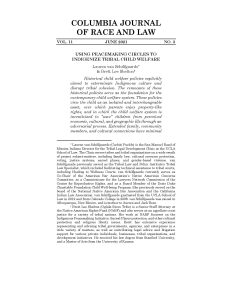The Truth About Tribal Child Welfare
“Using Peacemaking Circles to Indigenize Tribal Child Welfare” By Lauren van Schilfgaarde & Brett Lee Shelton
Historical child welfare policies explicitly aimed to exterminate Indigenous culture and disrupt tribal cohesion. The remnants of these historical policies serve as the foundation for the contemporary child welfare system. These policies view the child as an isolated and interchangeable asset, over which parents enjoy property-like rights, and in which the child welfare system is incentivized to “save” children from perceived economic, cultural, and geographic ills through an adversarial process. Extended family, community members, and cultural connections have minimal voice or value.
This Article suggests that circle processes like peacemaking are a framework for re-Indigenizing the tribal child welfare system to not just improve outcomes (which it has the potential to do), but to also honor the interconnected, responsibility-oriented worldview of Indigenous communities. Ultimately, however, tribes should lead that re-Indigenization process, whether through a circle process framework or otherwise.
To view the article click on link: https://peacemaking.narf.org/wp-content/uploads/2021/12/Using-Peacemaking-Circles-to-Indigenize.pdf
